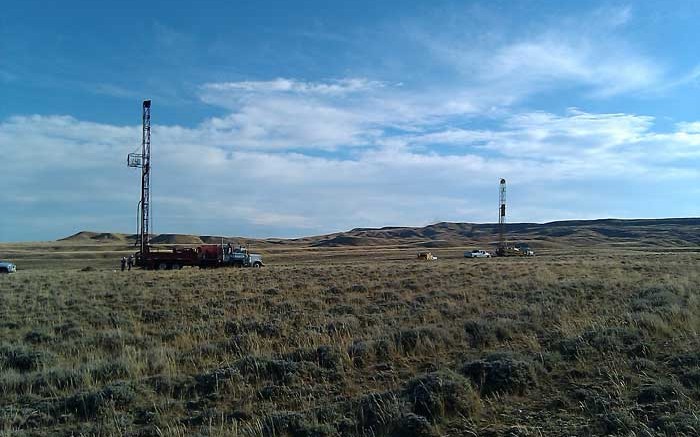Uranium miner Energy Fuels (TSX: EFR; NASDAQ: CLNE) has provided a market update after acquiring Strathmore Minerals by way of a plan of arrangement — a move that shareholders of both companies applauded.
As part of the transaction, Strathmore shareholders received 1.47 shares of Energy Fuels for each Strathmore share, and now hold 19.5% of Energy Fuels.
Energy Fuels’ president and CEO Stephen Antony said in a conference call that he is “really excited about the recent acquisition,” as it brings the company closer to becoming a leading uranium producer within the U.S.
Through the acquisition, the firm received Strathmore’s 60%-held Roca Honda uranium project in New Mexico. The rest of the project is owned by Japan’s Sumitomo. The 28.7 million lb. uranium oxide (U3O8) project sits within trucking distance of Energy Fuels’ White Mesa uranium mill, which is the only operating uranium mill in the U.S. It’s possible that the mill could treat Roca Honda’s ore, reducing the project’s start-up costs and permitting. A preliminary economic assessment by Strathmore shows Roca Honda could generate 2.6 million lb. U3O8 per year over a nine-year mine life.
The 1,800-tonne-per-day White Mesa mill is located in Blanding, Utah, which also allows it to process ore from projects in Arizona, Colorado and New Mexico. It’s the only facility in North America that can treat alternate feeds or uranium-bearing tailings from third parties. There are no related mining costs for these alternate feeds.
Energy Fuels also acquired Strathmore’s Gas Hills uranium project, some 45 km from its large Sheep Mountain uranium deposit in Wyoming’s Fremont County. Antony says the company is permitting both, so the deposits would be ready for construction when the uranium price picks up — something he expects could happen in the long-term. “We see the price of uranium increase to levels of around US$75 per lb., which is where it was prior to the Fukushima incident in 2011.”
Upon signing a letter of intent to take over Strathmore in May, Energy Fuels said that the two nearby projects could be combined in order to lower costs and speed-up development, adding that Strathmore has several other mining claims near Sheep Mountain that could also be merged.
On its own, Sheep Mountain could generate 1.5 million lb. U3O8 per year throughout its 15-year life, according to a 2012 prefeasibility study. The asset has 30 million lb. grading 0.12% U3O8 in measured and indicated.
More importantly, Antony notes that with the takeover Energy Fuels can strengthen its relations with Sumitomo and South Korea’s utility giant KEPCO. Before the transaction KEPCO was Energy Fuels and Strathmore’s largest shareholder, and it can still earn 40% of Gas Hills by investing US$32 million in the project over three years.
“We have the right people and the right partners in place to realize our potential, including a management team and a board that is experienced in mining, milling, permitting and finance,” Antony says. After closing the acquisition, Energy Fuels added former president of Strathmore Steven Khan and KEPCO’s vice-president of overseas resources Eun Ho to its board of directors. The company now has 11 directors.
In fiscal 2013, Energy Fuels anticipates producing 1.15 million lb. U3O8 from conventional ore and alternate feed sources, as well as 1.54 million lb. vanadium.
But if the spot price rebounds to the US$75 per lb. range from the current US$34 per lb., the company estimates it could produce more than 6 million lb. uranium oxide a year.
“We have unequal production scalability . . . no other uranium company has the ability to increase its production by five to six times like Energy Fuels,” Antony says. The extra output is expected to come from the six uranium mines that the producer has fully permitted, developed and placed on standby. The mines could be brought into production within three to 18 months if the uranium price turns around, Antony explains. The 20 million lb. U3O8 Henry Mountains complex in Utah is one of the six mines.
For now, Energy Fuels is producing uranium from its Arizona 1 and Pinenut mines in Arizona. This year it is also developing the Canyon uranium mine, also in Arizona.


EFR has the potential to stealthilly become a NA Uranium One if it plays it’s cards right. IF so, it will be far less vulnerable to the vagaries of unpredictable rapid policy shifts in places like Russia, Kazakhstan and throughout Africa as well as S America as it is in a predictable environment. Of course a great deal depends upon Uranium prices. Japan was hoped to be helpful in this regard but it looks like it won’t happen in the short term. However, the Russian and US megatons to megawatts deal is highly unlikely to be renewed and I severely doubt that the Russians will downblend those warheads as it costs far more to make a warhead than for them to simply buy the yellowcake from Kazakhstan via it’s Uranium One controlled operation.